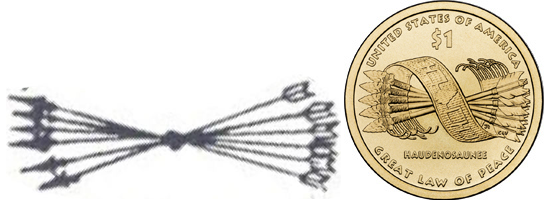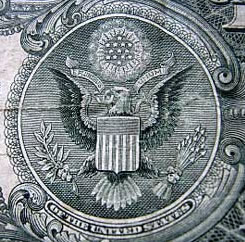
In August 1775, the Continental Congress sent a delegation to Albany to ask the Six Nations of the Iroquois to stay neutral in the war with the British. John Hancock, president of the Congress, quoted the Iroquois story:
“…They have frequently taken a single arrow and said, children, see how easy it is broken, then they have tied twelve together with strong cords – and our strongest men could not break them. See, said they, this is what the Six Nations mean. Divided a single man may destroy you – united, you are a match for the whole world.”

The original design for the Great Seal of the United States by Francis Hopkinson in 1780 shows lady liberty holding the olive branch and a native american warrier with a bow and arrows.

